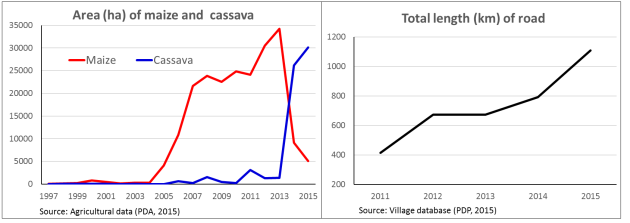3 major proximate causes
There are 3 major proximate causes[1] were identified to cause directly the loss of forest cover. Those are:
Agricultural expansion.
Infrastructure expansion.
Woods extraction.
The need to expand agricultural land is the most important cause for the loss of forest cover. The cultivated area of annual upland crops was impressively increased from early 2000s.
In addition, the extraction of forest timbers and gemstones during the civil war from early 1980s to early 1990s marked the start of and contributed to the loss of forest cover. The surface of roads networks initially constructed to transport the timber and gemstones added also to the loss of forest cover. The roads rehabilitation and construction were done after the reintegration of Khmer Rouge and continued at fast pace from early 2010s.







